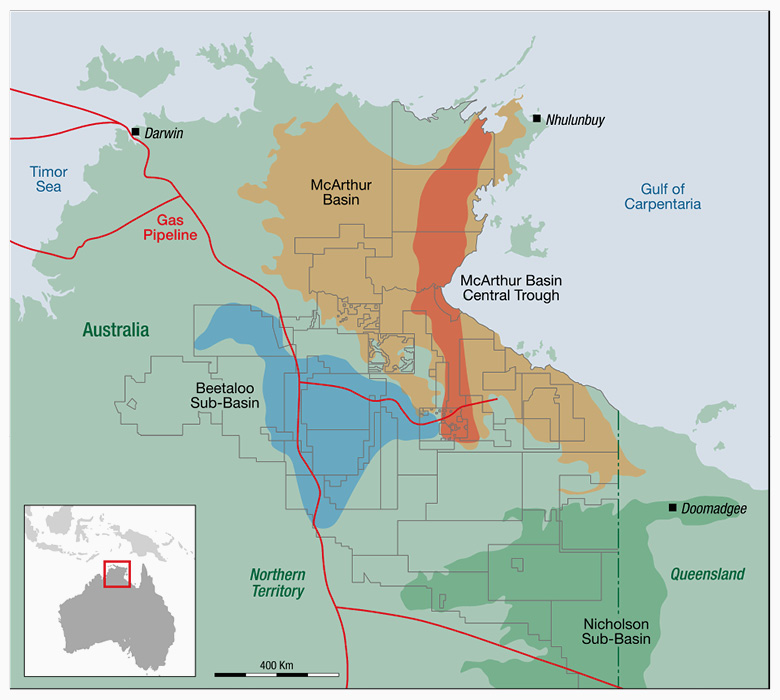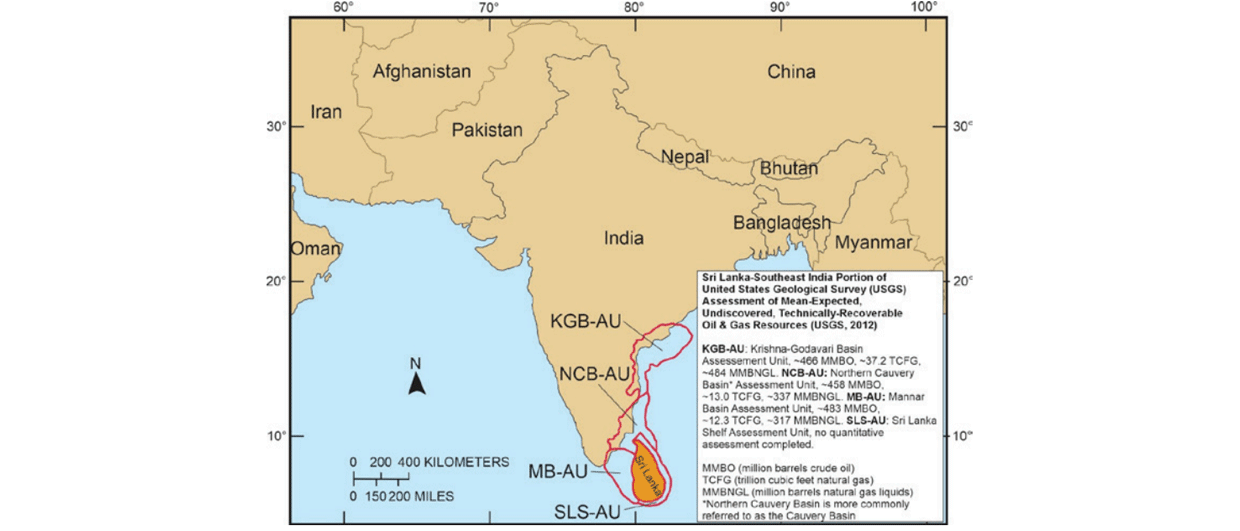Beetaloo geology – Sometimes age doesn’t matter
The Beetaloo is a sub-basin within the greater McArthur Basin, in the Northern Territory (NT) of Australia, some 600 km south of Darwin, covering an area of approximately 28,000 square km. In its 2018 petroleum assessment, the USGS estimated undiscovered, technically recoverable mean resources of 429 MMbbl of continuous oil and 8 Tcf of continuous gas in the Beetaloo Basin. However, this may be a conservative estimate with Origin Energy estimating resources of 6.6 Tcf (2C) and Empire Energy 3.5 Tcf for its EP187 permit alone.
The two main intervals with the greatest hydrocarbon potential are the Kyalla and middle Velkerri Formations of the Roper Group, which are some of the oldest proven hydrocarbon source rocks in Australia. The reason for this is that the rocks have not undergone excessive deformation or been thermally stressed. Both contain favourable properties for the generation of shale gas, including mineralogy, organic geochemistry and maturity. The formations are also significantly thicker than North American shale plays where average thicknesses are between 20 m (Barnett Shale) and 100 m (Eagle Ford). In the Beetaloo, Empire recorded net thickness of 270 m in the Velkerri interval and Origin, almost 900 m thickness over the entire Kyalla section, with gross thicknesses of each interval at 75–125 m.
World Class Flow Rates and Resources
A relatively small number of exploration wells have been drilled to date, with initial gas discoveries made in 2014–2015 by Origin Energy and Santos. Tanumbirini-1 (Santos), was successfully re-entered and tested in 2020, significantly exceeding expectations, with an initial peak gas rate of ~10 MMscfd, and an average rate of 2.3 MMscfd over the first 90 hours of testing. Fracking at Tanumbirini-1 indicates that horizontal wells in the Beetaloo’s middle Velkerri Shale Formation have the potential to be similar or better than wells in the Marcellus Shale Play, the most prolific in North America.
To date, Origin has identified four stacked, unconventional plays in its acreage, namely, the Velkerri liquids rich and dry plays, Kyalla liquids rich play and Hayfield Sandstone oil/condensate play. The company recently booked 6.6 Tcf contingent resource relating to the Velkerri B shale dry gas play. Origin confirmed the Kyalla 117 N2-1H ST2 well as a gas discovery with early-stage flow rates of 0.4–0.6 MMscfd recorded over 17 hours, with detailed evaluation expected in the second quarter of 2021 once extended testing is completed.
The October 2020 discovery, Carpentaria-1 (Empire Energy) also found liquid-rich gas in the Velkerri Shale, but at a shallower depth and over a greater proportion of the formation compared to analogue wells in the Beetaloo Basin. Empire booked best estimate contingent gas resource of 41 Bscfg in the immediate vicinity of the Carpentaria-1 well location, with resources for its EP187 permit increased by 47% to 3.5 Tcf. Empire is now preparing a fracking campaign for the second quarter of 2021.
Stars align as government backs development and companies consolidate their positions
Just as the Victoria Government announced a lifetime ban on fracking in the state, the NT Government has gone all-in, with a strategic plan to accelerate gas exploration and development in the Beetaloo Sub-basin and to create thousands of jobs. It has also set aside A$50 million incentives for exploration that starts before 30 December 2022, with hopes of commercial production beginning at the latest by 2025. Further to this announcement, the government outlined more investment in January 2021, which includes financing of more than A$220 million to improve infrastructure, an efficient but rigorous regulatory environment and working with local communities.
In April 2021, Empire Energy signed a sale and purchase agreement with Pangaea and Energy & Minerals Group, becoming sole operator for five permits across the basin, enhancing its early commercialisation plans, with multiple drill-ready targets and excellent access to the gas pipeline infrastructure. Further east, in the greater McArthur Basin, Armour Energy has lodged the first applications for retention licences in the area over portions of EP 171 and 190, aiming to sell gas from late 2022 onwards. The company also announced that it is to demerge the ASX-listed Northern Basin Oil & Gas Business into a newly formed company named McArthur Oil & Gas, which will be separately listed on the ASX. Meanwhile, Santos’s partner Tamboran Resources added Dick Stoneburner as Chairman, who as founder and president of Petrohawk Energy was a key figure in the $US12.1 billion sale of the US shale firm to BHP in 2011. Stoneburner describes the play “as good as any shale play I’ve seen”: further testament to this emerging basin.
This Hot Spot update is brought to you in association with NVentures.






